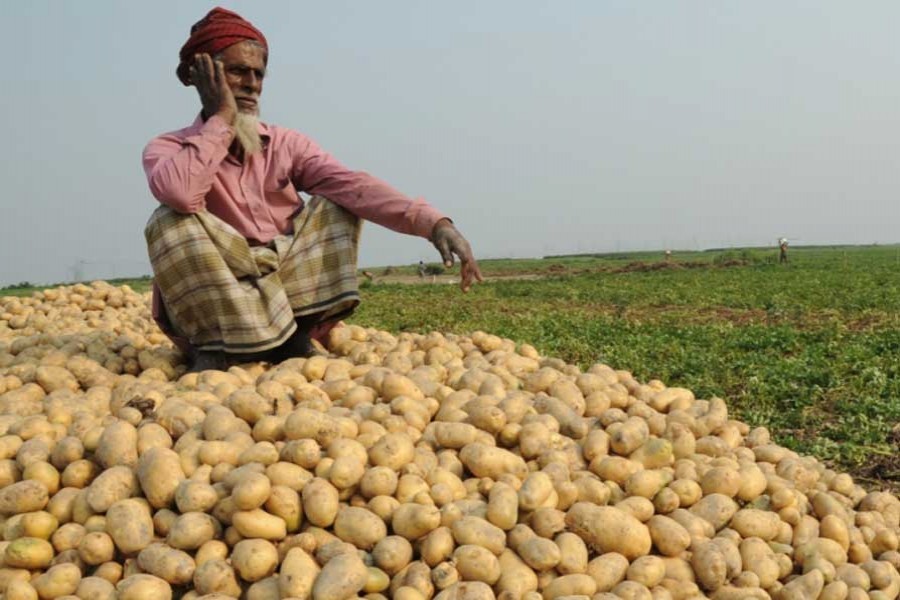
Published :
Updated :

For some years now, contrary to reasons, good harvest of potatoes has turned out to be a cause of the growers' misery. While concerned quarters put it on a lack of planning, which among others includes dearth of sufficient storage facilities in the vicinities of potato growing areas, the burden of 'bumper harvest' falls squarely on farmers who are extremely ill at ease with their produce in a severely under-priced domestic market.
Not only in case of potatoes, the same is often true for some other horticulture products such as tomatoes, leafy vegetables, pineapples etc. The case of potatoes this year is perhaps more distressing than those of others. Thanks to the media that the matter has been highlighted from various angles, but in the absence of any ready mechanism to address the situation, the plight of farmers remains unheeded. Increased harvest in the absence of storage facilities has clearly added to the losses of farmers. Stockpiled potatoes in the open due to lack of sufficient storage facilities in the cold storages, carrying hazards at various points to wholesale markets, coupled with unprecedented price slump have caused extreme misery to farmers, especially in the northern region which accounts for 70 per cent of the total production of potatoes in the country. Most of the cold storages in the main potato producing region, Rangpur division, are almost full.
A FE news story, quoting Bangladesh Cold Storage Association (BCSA) says lower prices and unsold produce at warehouses caused Tk 125.15 billion in losses to farmers and cold storage owners last year, and the scenario this year looks no different. A total of 0.46 million hectares (460 thousand) of land have been brought under potato farming this season, targeting the production of 10 million tonnes, according to the Department of Agriculture Extension (DAE), of which 90 per cent of harvest was reportedly reaped by March 31. The Bangladesh Cold Storage Association (BCSA) has 400 cold storages which together can preserve close to 6.0 million tonnes of potatoes. Cold storages in the northern region account for three-fifths of the total storage capacity. So, there is a substantial gap in potato yield and storage facility.
Increasing storage capacity by setting up more cold storages is apparently a solution, but to achieve the objective, there is a need for incentivising the cold storage sector. There are reports of problems facing the cold storage industry, mainly related to bank loans and rescheduling of loan repayments. The cold storage association (BSA) has been flagging their grievances for some time, addressing some of which could bring a change towards raising storage capacity through setting up new storage plants. Given that this can not be an immediate recourse, the authorities, especially the Department of agricultural Extension (DAE), should work a way out which among others may include providing facilities for export. Concerned quarters believe export could bring a respite to farmers if there was a concerted move to grow potatoes keeping in view the market-specific choices and standards set by the importing countries, particularly in respect of sanitary and phytosanitary requirements.


 For all latest news, follow The Financial Express Google News channel.
For all latest news, follow The Financial Express Google News channel.